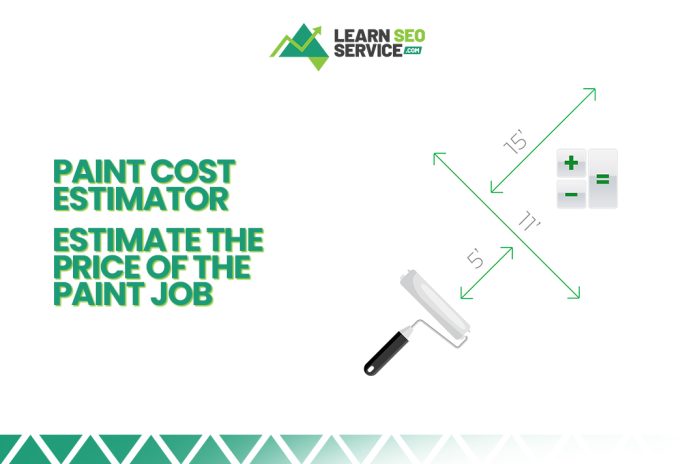Estimating paint jobs can be a daunting task for beginners in the paint business. Don’t bet so high that you can’t get the job done. Also, you don’t want to demand such a low price that you don’t want to make a profit. How you cite projects determines your ability to get jobs, set clear expectations, and maximize profits. Getting the right job isn’t just about your cash flow, however.
It would help if you also met customers’ expectations who depend on what they read online and learn from others’ word of mouth and customer recommendations. Install WooCommerce variable pricing plugin on your website to provide detailed information about every aspect of the painting job. In this article, I will help you to quote your paint job with tips and tricks.
Do a Site Visit
Do yourself a favor and visit the website earlier than expected. Factors such as the poor condition of the walls may add to the price. For example, you will need more paint to cover dark walls. Also, many accent walls and different colors take longer.
Then take a laser measurement and measure the site yourself. Next, ask the customer if he wants to paint the walls or ceilings, panels, and doors. Ask if they offer color, and if not, they need a specific brand, and they should be mixed separately, Jobber says.
Asking all of these questions in advance will make your forecast more accurate and save you a lot of trouble. If you don’t have any drawing or grading experience, try hiring someone with more experience.
Cost of Paint
The paint price per gallon varies a lot – from $ 15 to $ 80, depending on the brand and quality. However, the overall color costs an average of $ 15 to $ 50 per gallon. An experienced contractor with a well-established relationship with suppliers can buy half as much paint as a customer or owner.
For example, if a homeowner can buy a gallon of paint for $ 40, a skilled builder can buy it for $ 20. When you have more experience, take advantage of supplier relationships to save on color discounts.
Calculate Labor Cost
Your painter’s hourly wage is the biggest element, but there are other considerations when calculating painting costs.
Depending on your team’s experience, you will likely pay different prices. Take the time to work out the optimal blending rate for your team – and remember, this number is useful in jobs that require specific skills, such as working out. B. Woodworking is likely to increase.
When calculating the amount of paint, consider a new building – add 30% more time to decorate and seal the walls. In addition, you need to distinguish between interior and exterior paints – with more careful preparation, detailing, and cleaning, the interior can take two to three times more hours than the same exterior surface.
Don’t Underestimate Your Work
When evaluating, two of the most common mistakes artists make are incorrectly calculating delivery times and failing to set the right expectations for potential customers. Most of us know how to do our job well, but we need to learn to listen and interpret what the client wants for the best results.
Think about the weather. In new designs, delays in installing electricity or plumbing can also be extended to painters, who usually work last. Likewise, working outdoors can be delayed due to bad weather. Labor costs also include costs such as insurance and taxes. Therefore, it is important to consider the big picture you see in our to-do list in the blue box.
Estimate Cost of Overhead and Marketing
It would be good to factor in the costs you run and run the company to make sure you don’t lose money on your projects. While everything we’ve included in this guide will help you estimate the real cost, don’t forget how much it will cost to run a business or find a new one.
If you can take 5K for more painting, you only make 3K if 2K is worth the advertising costs to find a customer and start a business. If you do not calculate these costs, your fund will start to fall. To avoid this, try to make sure that getting a job does not cost you more than 10% of the cost of the job.
Determine Your Markup
Then it would help if you considered your re-evaluation in your final evaluation. To learn what branding is and how and why factoring is important, check out our guide to increasing your construction profit.
Although each business is unique and size affects the brand that each business has to pay, you should aim for at least 50% profit as a small business and about 30% for a larger business.
Such branding will not only bring you profit but also expand your business. It also helps you account for variable or hidden costs initially unpredictable, including errors or omissions.
Stay organized and always follow-up
Detailed offers, good prices, and impressive customer service are only half the battle. To have a record year, you need to be organized and track your bids.
By following an offer, you can build relationships and trust. It shows your boss that you care, not just the next job.
If you’re too busy to keep track of every listing, try following the bestseller advice that you think is best for your business, and that seems the most promising.
Summing it all
The most important part of the estimate is to make sure that the expectations of the client and the painting contractor match. Be prepared for the customer to receive a lower price than yours, and resist the temptation to lower the price below what you can afford to get the job done. Instead, be confident in your value and tell them your estimate is a fair price based on your real value for quality work that will receive rave reviews from other clients.










